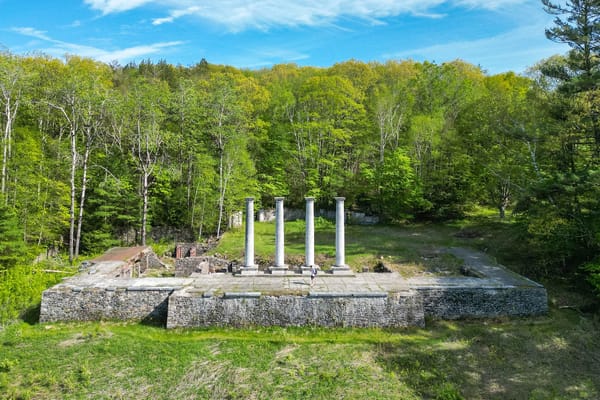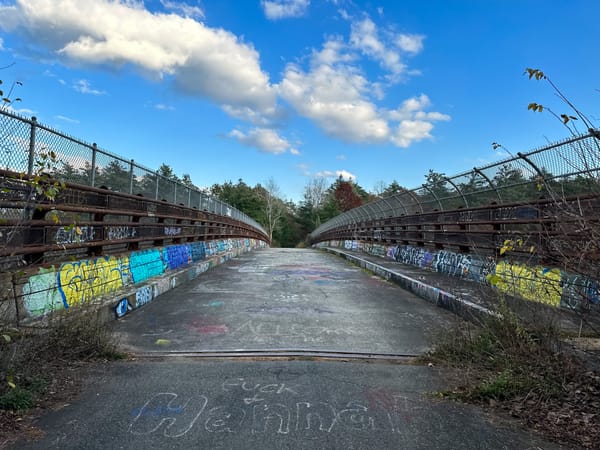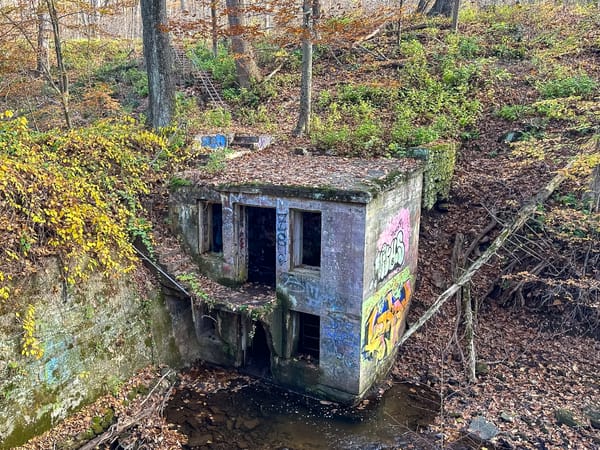Battery Crawford (Westerly, RI)
At the far end of Napatree Point in Watch Hill, Rhode Island, the windswept remains of Battery Crawford sit quietly amid dunes and sea grass.

At the far end of Napatree Point in Watch Hill, Rhode Island, the windswept remains of Battery Crawford sit quietly amid dunes and sea grass — a haunting reminder of an era when the U.S. coastline bristled with coastal artillery.
Built in 1900 as part of Fort Mansfield, this Endicott-Era reinforced-concrete gun battery once guarded the entrance to Long Island Sound and Narragansett Bay. Today, the fort’s crumbling ruins invite curious visitors to wander through history, where the Atlantic Ocean now laps against walls once meant to repel naval invaders.
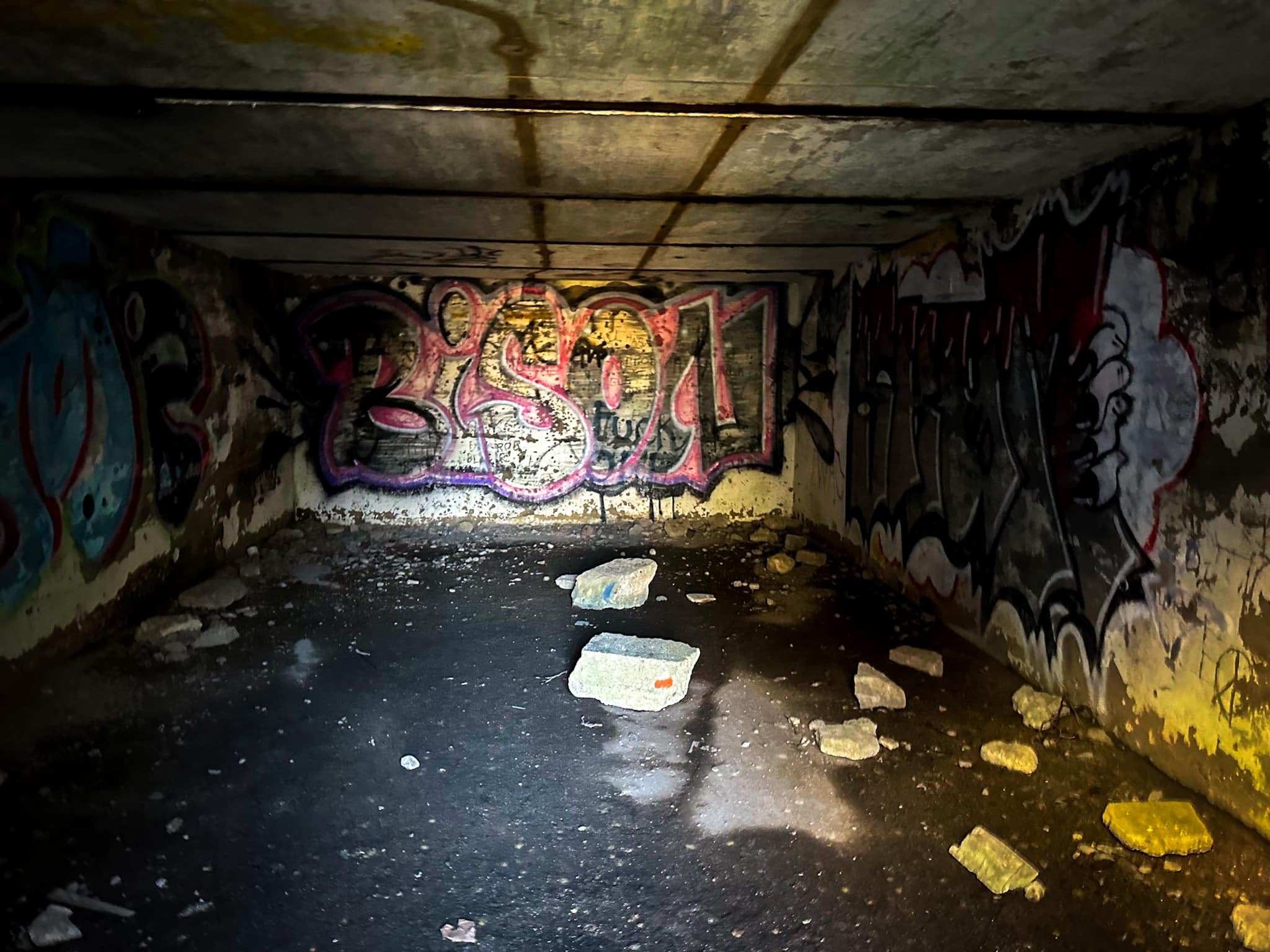
The Creation of Fort Mansfield
In the late 19th century, new military technology made the nation’s old brick forts obsolete. In response, the U.S. government convened the Endicott Board in 1885 to modernize America’s coastal defenses. Between 1890 and 1910, hundreds of new concrete gun batteries were constructed — a period now known as the Endicott Period.
As part of this initiative, the government purchased 60 acres on Napatree Point, a narrow spit of land extending from Watch Hill into the sea. Construction began in 1898, and by 1901, Fort Mansfield was officially active. It was initially a sub-post of Fort Trumbull in New London, Connecticut, before becoming an independent fort the following year.
Three major batteries were built at Fort Mansfield:
- Battery Wooster
- Battery Crawford
- Battery Connell
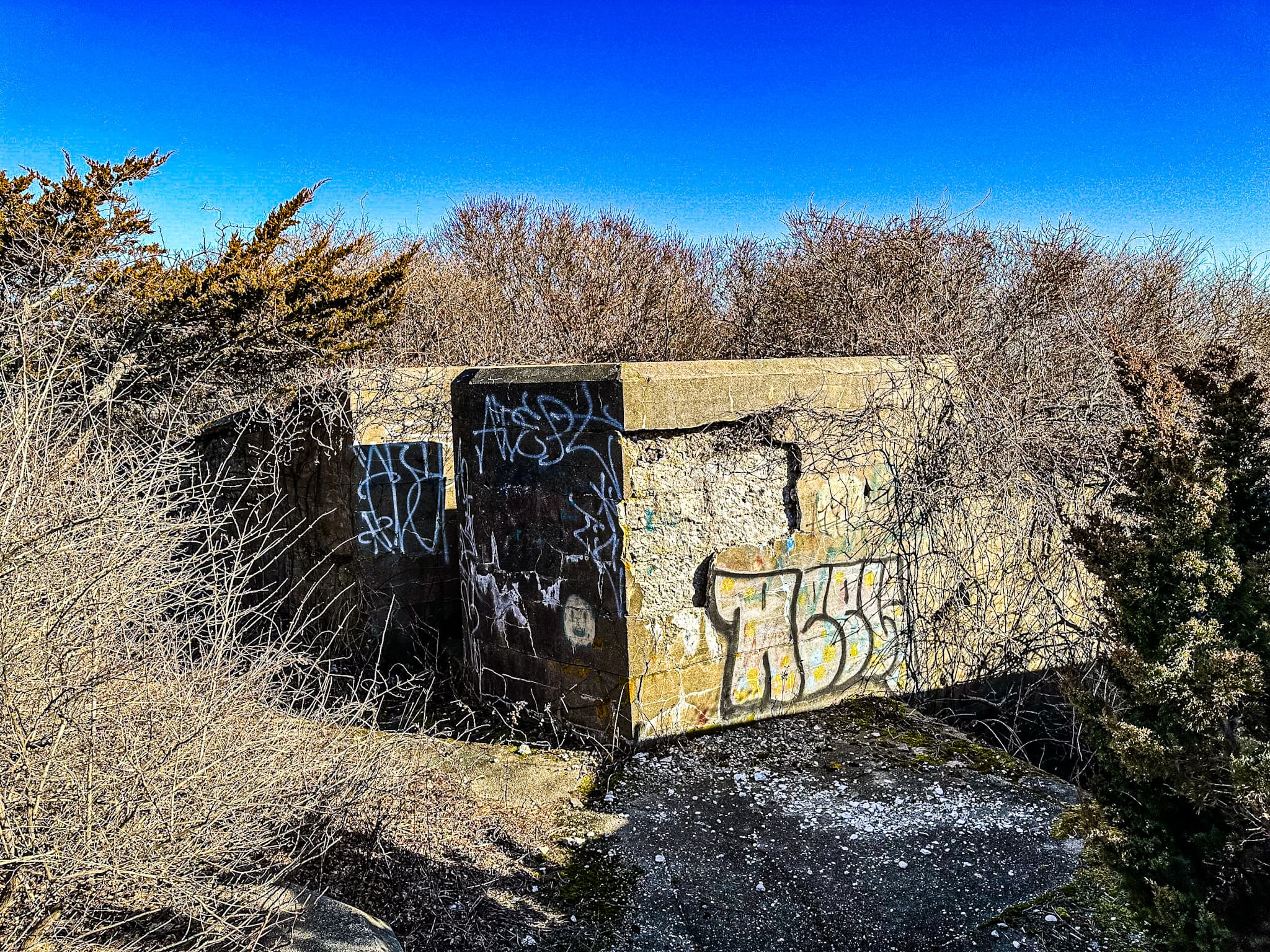
The Construction of Battery Crawford
Work on Battery Crawford was completed in 1900 at a cost of $11,600. The battery was officially placed in service on February 18, 1901, and named in honor of a distinguished U.S. Army officer (a tradition throughout Endicott-Era forts).
Battery Crawford featured:
- Two 5-inch M1897 guns mounted on M1896 balanced-pillar carriages
- A two-story layout, with magazines and storage below and gun platforms above
- Taylor-Raymond shell hoists to lift ammunition to the upper level
These guns could fire armor-piercing projectiles several miles out to sea, covering the western entrance to Block Island Sound and Fishers Island Sound — a crucial strategic zone near the Rhode Island–Connecticut border.
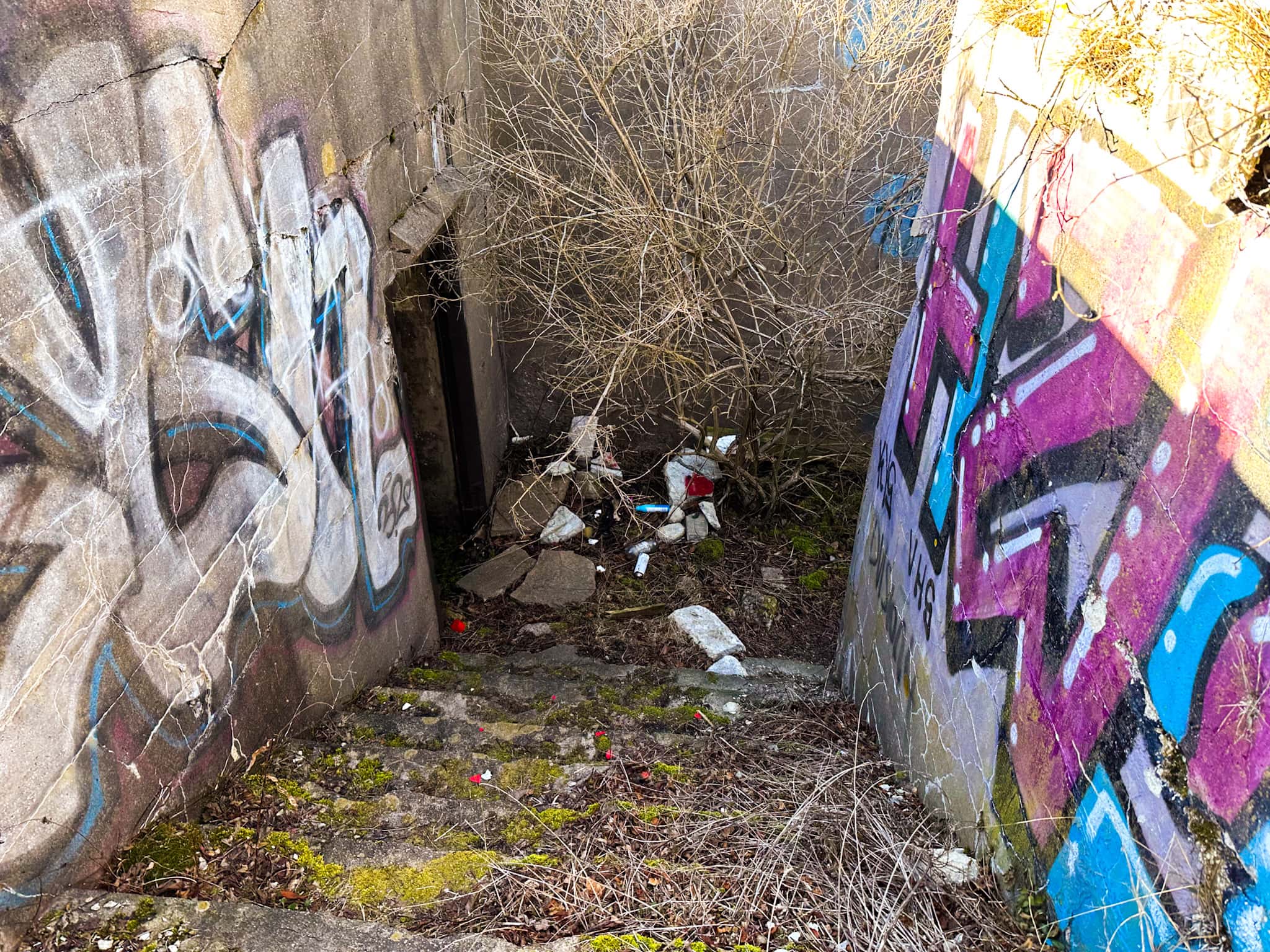
Fort Mansfield’s Fatal Flaw
Despite its impressive construction, Fort Mansfield had one serious problem — it was built in the wrong place.
In 1907, a series of battle simulations exposed a major “dead angle” in the fort’s field of fire, leaving parts of Napatree Point completely undefended. One Army observer famously remarked,
“I believe I could capture Fort Mansfield with a fleet of coal barges outfitted with 6-inch rapid-fire guns.”
This discovery was devastating. By 1909, the War Department downgraded the post to caretaker status, and Fort Mansfield was soon removed from the list of active coastal defense stations.
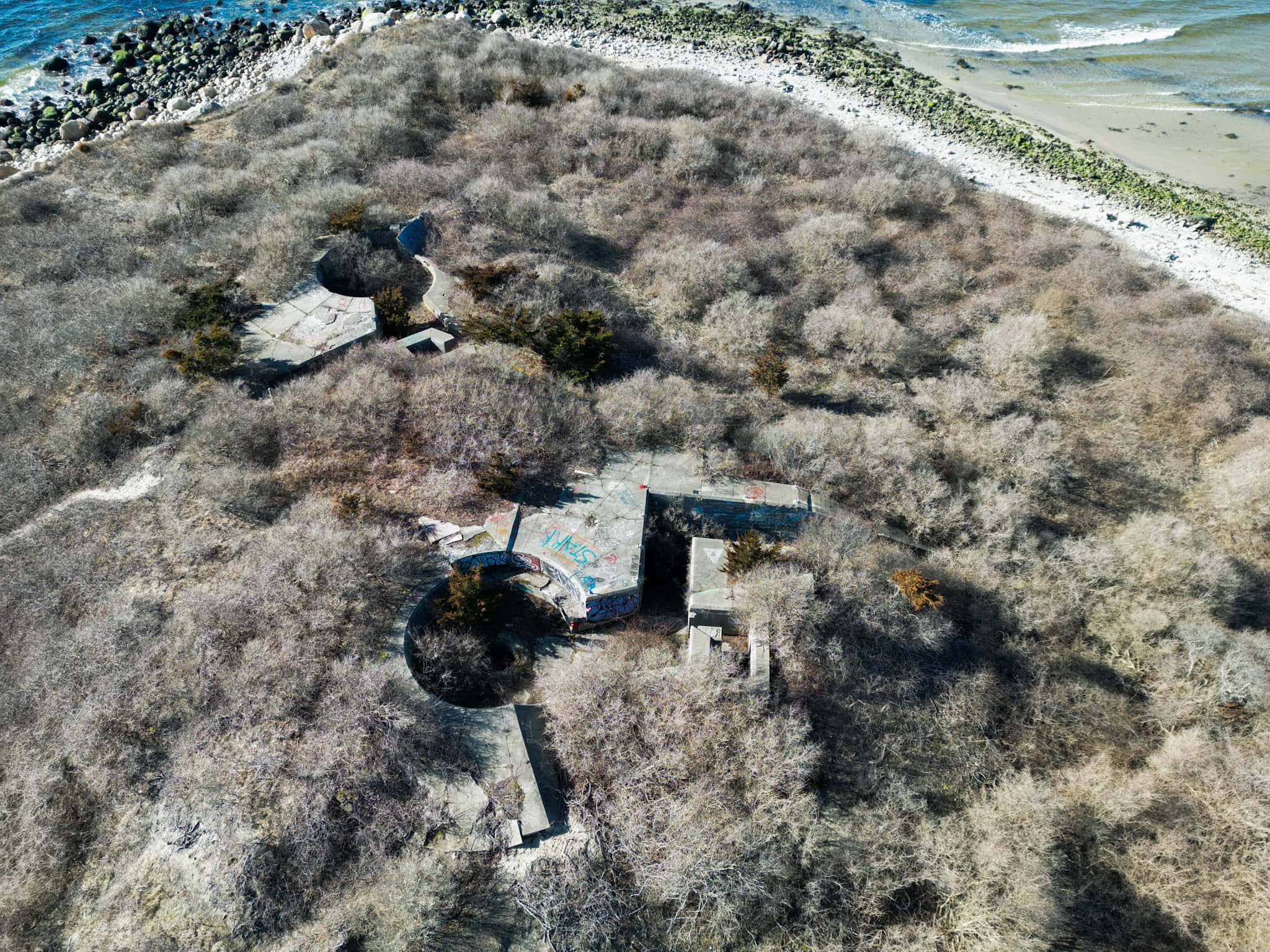
The Removal of Guns During World War I
When the United States entered World War I, many of the heavy guns from coastal batteries were removed to support the war effort overseas.
On August 24, 1917, Battery Crawford received official orders to dismount its two 5-inch guns for shipment to Europe. The guns were delivered to the Morgan Engineering Company on December 31, 1917, and subsequently sent to France, where they were used in the final months of the war.
Battery Crawford was never rearmed, and by the early 1920s, Fort Mansfield was fully abandoned.

Battery Crawford Today
Today, the ruins of Battery Crawford rest within the Napatree Point Conservation Area, part of the protected Watch Hill barrier beach ecosystem. While its guns are long gone, the structure remains largely intact — its open rooms, crumbling stairways, and reinforced walls offering a fascinating glimpse into early 20th-century military engineering.
Visitors can walk 1.25 miles along the beach trail from the Napatree Point trailhead to reach the site. A small path leads up from the shoreline to the concrete remains of the battery. As of 2023, the structure is open and easily accessible, allowing visitors to safely peek inside and explore its echoing chambers.
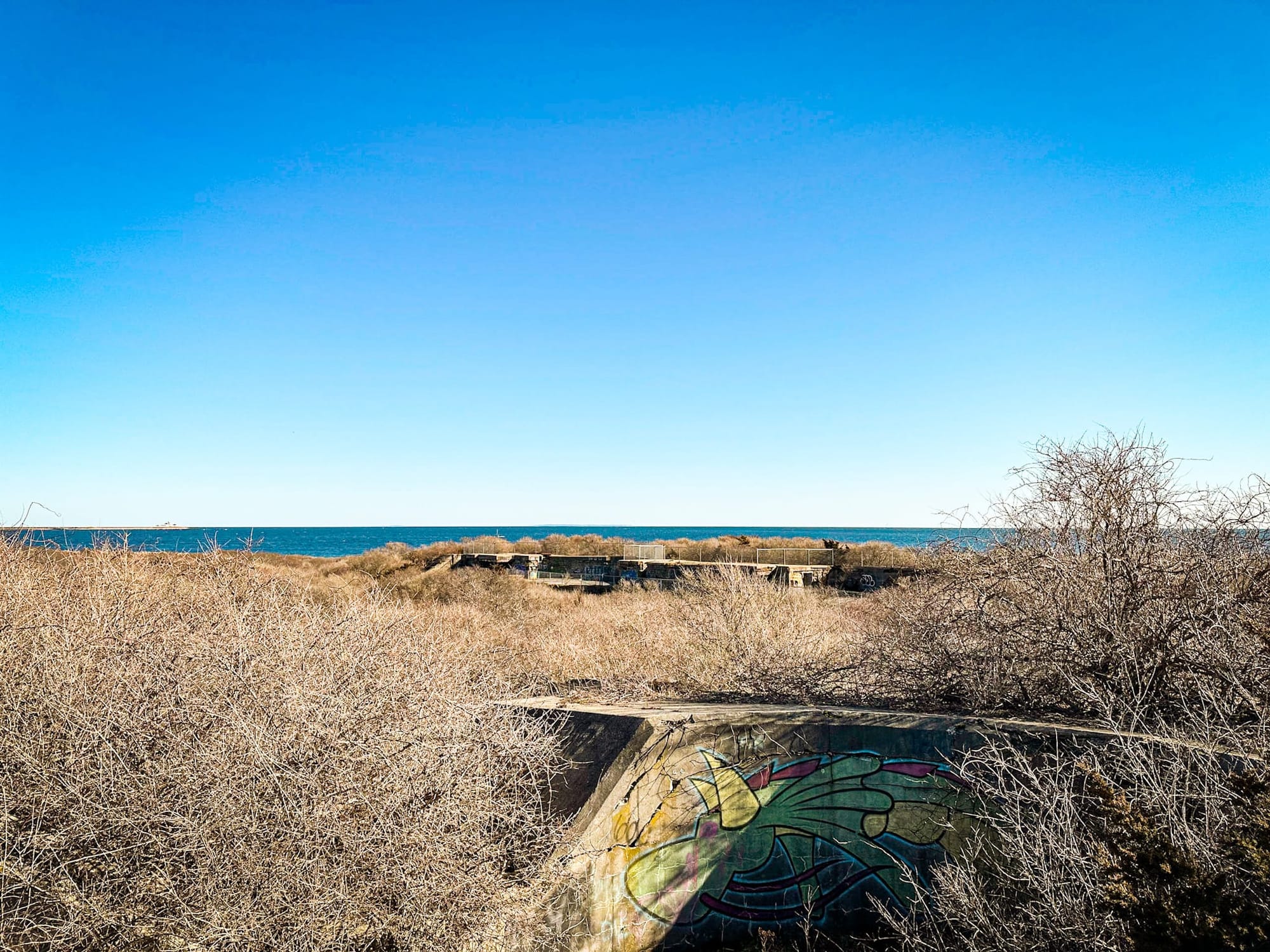
Visiting Information
- 📍 Address: Fort Road, Watch Hill, Westerly, Rhode Island
- 🌐 GPS Coordinates: 41.306972, –71.885611
- 🅿️ Parking: Public parking is available off Main Street in Watch Hill village. During summer months, spots fill quickly — visit early or during the off-season. In quieter months, visitors can park directly at the Napatree Point Conservation Area trailhead at the end of Fort Road.
- ⏰ Trail Distance: ~1.25 miles each way
- ⚠️ Note: The battery is unmaintained. Please explore carefully and respect conservation boundaries.
Although neighboring Battery Wooster has been sealed for safety, Battery Crawford remains open, making it one of the few accessible remnants of Fort Mansfield. Its weathered concrete and panoramic ocean views make it a favorite destination for photographers and local historians.
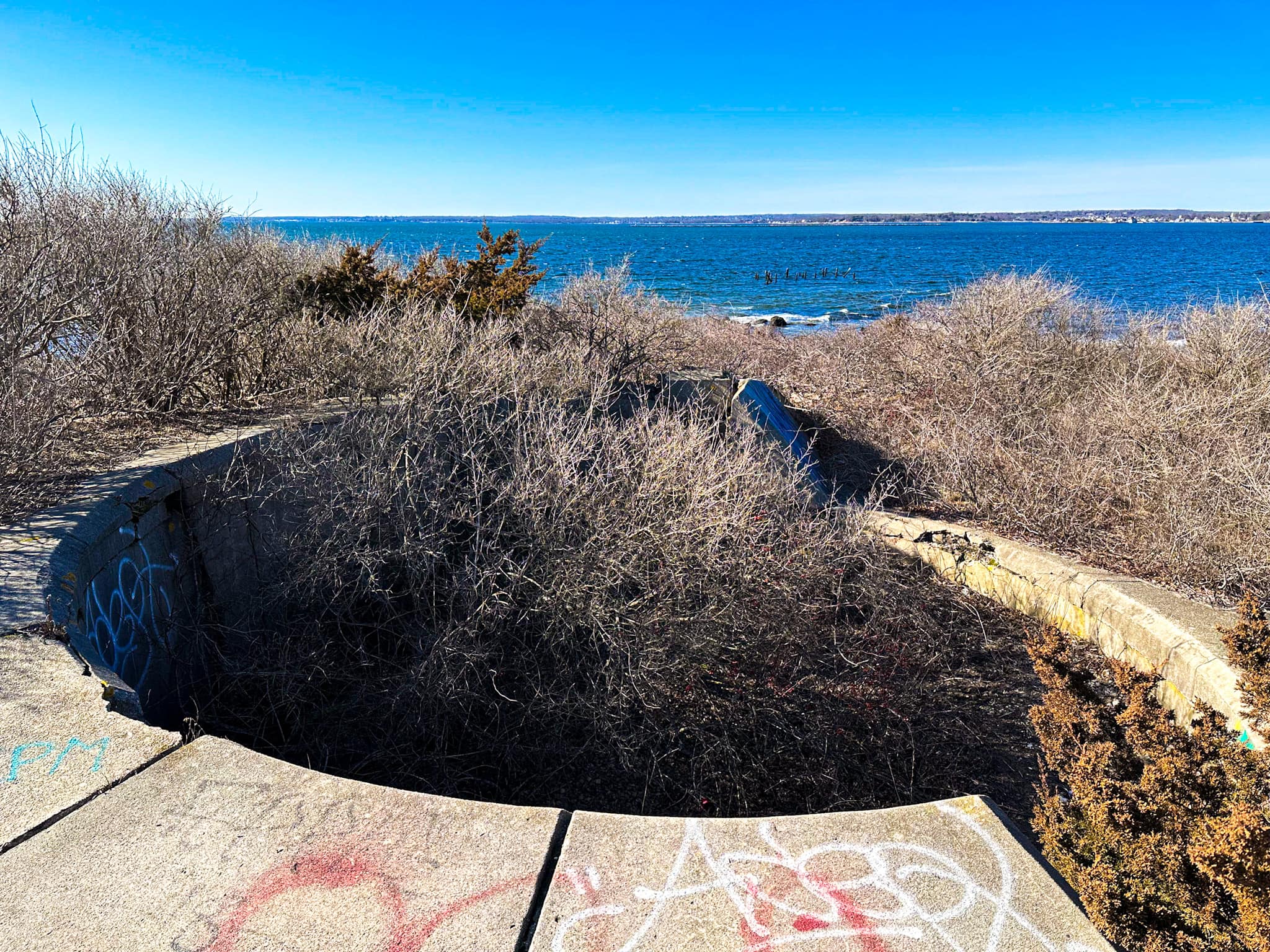
Why Battery Crawford Matters
Battery Crawford and the ruins of Fort Mansfield tell the story of both human ambition and nature’s reclamation. Once built to guard the Atlantic coastline, the fort was decommissioned in less than a decade — a reminder of how quickly military technology and strategy evolve.
Today, the site stands not as a symbol of war, but of reflection: a quiet monument to history surrounded by one of Rhode Island’s most beautiful natural landscapes.
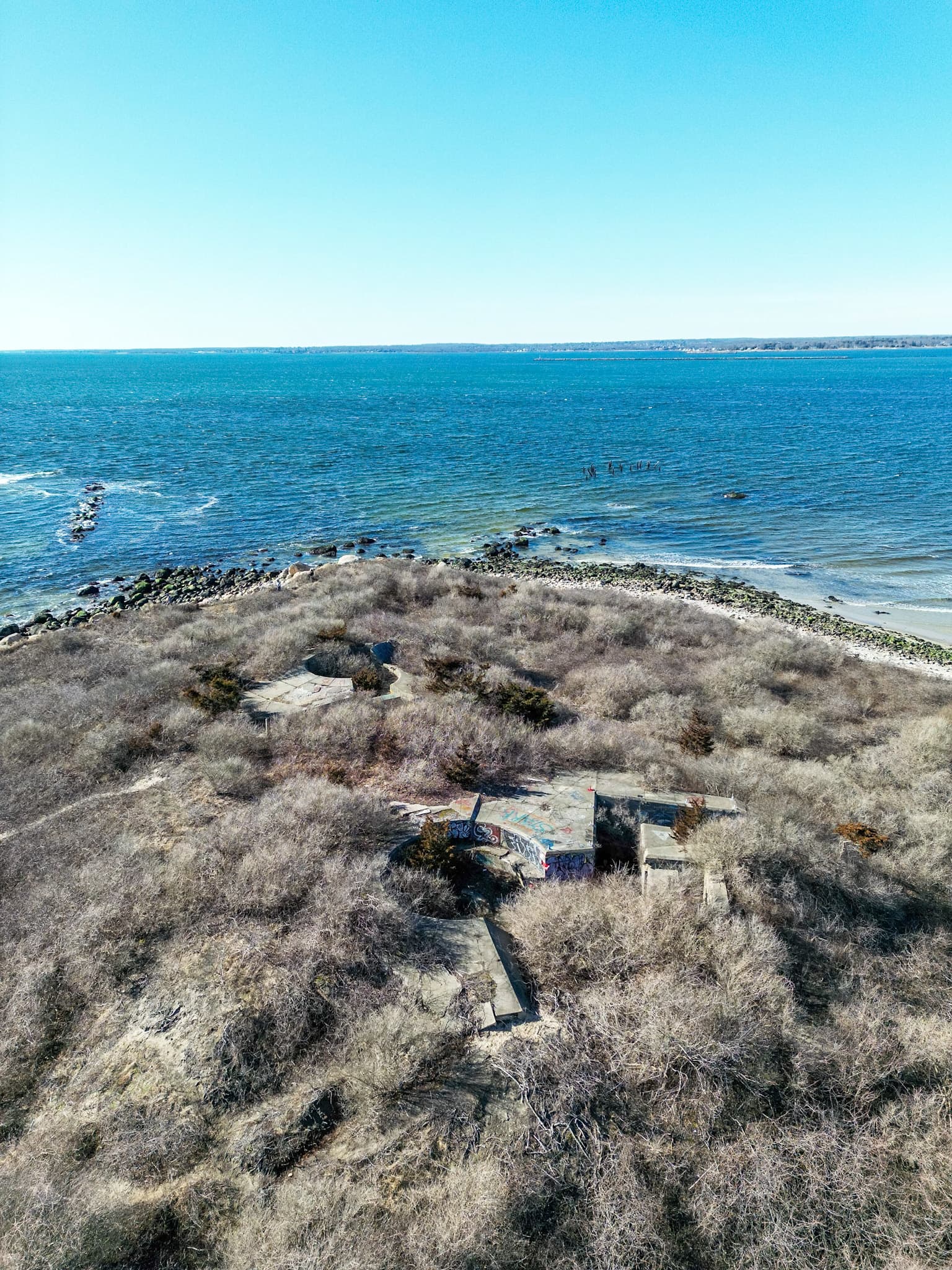
Quick Facts
- 🏗 Constructed: 1898–1900
- 💰 Cost: $11,600
- ⚙️ Armament: Two 5-inch M1897 guns on M1896 balanced-pillar carriages
- 🕰 In Service: February 18, 1901
- 🔧 Deactivated: 1909 (guns removed in 1917)
- 🏞 Now part of: Napatree Point Conservation Area
- 📷 Best views: Early morning or sunset along Napatree Point trail
Final Thoughts
A walk to Battery Crawford is more than a hike — it’s a journey through time. The sound of waves echoes through empty chambers once filled with soldiers, and the view from Napatree Point remains as commanding today as it was in 1900.
Whether you’re drawn by history, photography, or simply the wild beauty of Watch Hill, Battery Crawford offers one of the most memorable — and hauntingly beautiful — experiences in Rhode Island’s coastal fort heritage.

